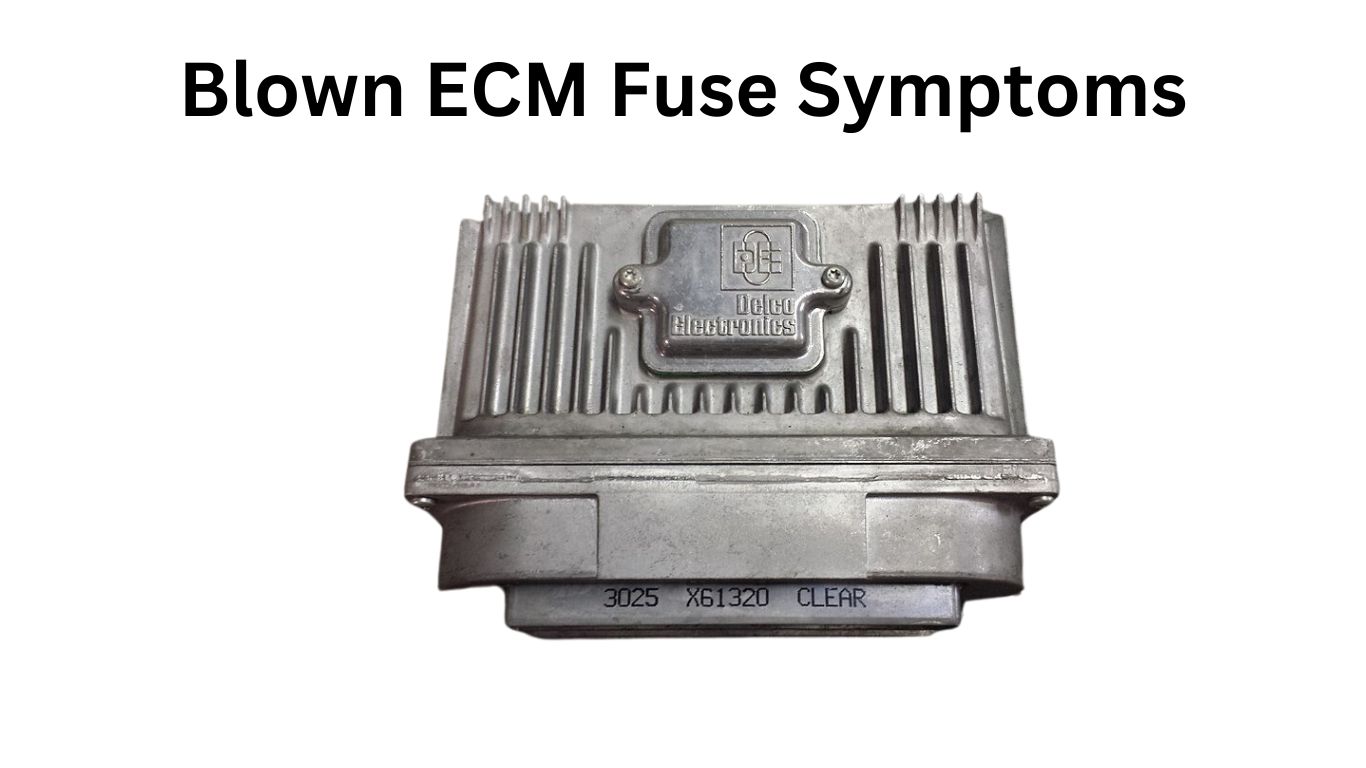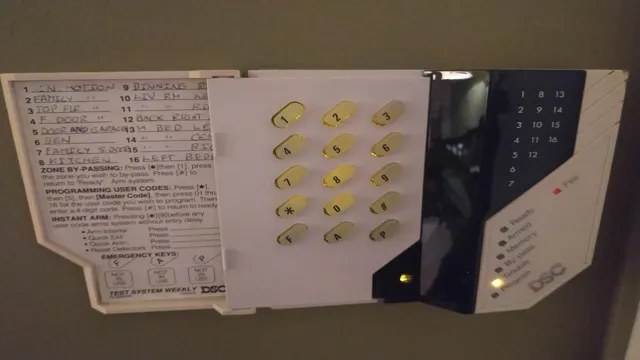Blown ECM Fuse Symptoms (Troubleshooting Guide)
The Engine Control Module (ECM) fuse. The ECM plays a vital role in regulating various engine functions, and its fuse acts as a safeguard against electrical faults. When the ECM fuse blows, it can lead to a range of issues that affect the performance and reliability of your vehicle.
In this comprehensive guide, we will delve into the signs that indicate a blown ECM fuse and provide you with a troubleshooting process to help identify the problem. Whether you’re experiencing engine stalling, electrical malfunctions, or warning light anomalies, understanding the symptoms is crucial for efficient diagnosis.
We will walk you through the diagnostic process, offering step-by-step instructions to determine if the ECM fuse is indeed blown. Armed with this knowledge, you can save time and money by either replacing the fuse yourself or seeking professional assistance.
Additionally, we will discuss preventive measures and maintenance tips to minimize the risk of ECM fuse failures in the future. Taking proactive steps to protect your vehicle’s electrical system can contribute to a smoother driving experience and enhanced reliability.
At the end of this article, you will be equipped with the knowledge to identify signs of a blown ECM fuse, troubleshoot the issue, and perform necessary repairs or maintenance. Remember, a healthy ECM fuse is crucial for the proper functioning of your vehicle’s engine control system, so let’s dive in and explore the fascinating world of ECM fuses together!
What is an ECM Fuse
The ECM fuse is a fuse specifically designed to protect the Engine Control Module (ECM), also sometimes referred to as the Engine Control Unit (ECU), of your car. The ECM is basically the computer that controls your car’s engine. It receives signals from various sensors and then adjusts things like the air-fuel mixture, spark timing, and idle speed to keep the engine running smoothly and efficiently.
The ECM fuse is located in the car’s fuse box, which is typically under the hood near the battery. The fuse box will have a diagram that shows the location and rating of each fuse, and the ECM fuse will usually be labeled “ECM” or “ECU.”
If the ECM fuse blows, it will cut power to the ECM and your car will not start. If you think that the ECM fuse may have blown, you can check it by following the instructions in your car’s owner’s manual. Replacing a blown fuse is a relatively simple process, but it’s important to make sure that you replace the fuse with one that has the same rating. Using a fuse with a higher rating could damage the ECM.
Here are some additional things to keep in mind about ECM fuses:
- The ECM fuse is not the only fuse that can affect the way your car runs. There are many other fuses that are responsible for powering different parts of the engine and electrical system.
- If you are having problems with your car’s engine, it is always best to consult with a qualified mechanic to diagnose the problem.
Understanding the ECM Fuse
The Engine Control Module (ECM) is a critical component of a vehicle’s electrical system, responsible for controlling various engine functions. To ensure the ECM’s proper operation and protect it from electrical faults, an ECM fuse is employed. The ECM fuse acts as a safeguard, interrupting the power supply in case of electrical overloads or faults.
The ECM fuse is typically located in the vehicle’s fuse box or power distribution center. Its purpose is to provide a dedicated circuit for the ECM, allowing it to receive the necessary power for operation. By incorporating a fuse in this circuit, any electrical issues that could potentially harm the ECM are mitigated.
When an electrical overload or fault occurs, such as a short circuit or excessive current draw, the ECM fuse is designed to blow. This prevents further electrical damage and protects the ECM from potential harm. Blowing the fuse interrupts the power supply to the ECM, rendering it inoperable until the fuse is replaced.
Understanding the ECM fuse is crucial because a blown fuse can lead to various problems, affecting the performance and reliability of your vehicle. It is important to be aware of the signs that indicate a blown ECM fuse and to address the issue promptly to restore proper functionality.
In the upcoming sections, we will explore the common symptoms of a blown ECM fuse and guide you through the diagnostic process, enabling you to identify and troubleshoot this issue effectively. By gaining a deeper understanding of the ECM fuse and its role in your vehicle’s electrical system, you can take the necessary steps to ensure its proper operation and safeguard the ECM from potential electrical faults.
Common Symptoms of a Blown ECM Fuse
When the ECM fuse in a vehicle blows, it can lead to a range of symptoms that indicate an electrical issue. It’s important to recognize these common symptoms to promptly diagnose and address the problem. Here are some of the most prevalent signs of a blown ECM fuse:
1. Engine Stalling or Failure to Start
A blown ECM fuse can cause the engine to stall unexpectedly while driving or prevent it from starting altogether. This occurs because the ECM is unable to receive power and provide the necessary engine control signals.
2. Electrical Malfunctions
A blown ECM fuse can result in various electrical malfunctions throughout the vehicle. This may include non-functional power windows, malfunctioning headlights or taillights, inoperative dashboard instruments, or erratic behavior of the HVAC (heating, ventilation, and air conditioning) system.
3. Warning Lights or Error Messages
When the ECM fuse blows, it can trigger warning lights or error messages on the instrument cluster. These may include the check engine light, ABS (anti-lock braking system) warning light, or other system-specific indicators. These lights serve as indications of a potential electrical issue affecting the ECM or related systems.
4. Loss of Power to Engine Systems
With a blown ECM fuse, the engine’s vital systems may experience a loss of power. This can result in decreased performance, reduced fuel efficiency, or difficulties in maintaining consistent engine speed. You may notice a lack of power during acceleration or a general sluggishness in the vehicle’s performance.
5. ECM Error Codes
When the ECM fuse is blown, it can trigger error codes in the vehicle’s onboard diagnostic system. These codes can be retrieved using a diagnostic scanner or code reader. Common codes associated with a blown ECM fuse include P0605 (ECM read-only memory error) or P0606 (ECM processor fault).
Diagnostic Process for Identifying a Blown ECM Fuse
Diagnosing a blown ECM fuse requires a systematic approach to identify the exact cause of the issue. Here is a step-by-step diagnostic process to help you identify a blown ECM fuse:
1. Visual Inspection
Begin by conducting a visual inspection of the vehicle’s fuse box or power distribution center. Locate the fuse associated with the ECM (refer to the vehicle’s manual or fuse box diagram). Inspect the fuse for any signs of damage, such as a broken filament or a visibly blown fuse element.
2. Fuse Testing
Using a multimeter set to the continuity or resistance mode, test the ECM fuse for continuity. Place the multimeter probes on each end of the fuse and check if there is continuity or a low resistance reading. If there is no continuity or a high resistance reading, it indicates a blown fuse.
3. Check Other Fuses and Relays
While diagnosing a blown ECM fuse, it’s important to check other fuses and relays related to the ECM or associated systems. Look for any other blown fuses or malfunctioning relays that may be causing the issue.
4. Inspect Wiring and Connections
Examine the wiring harness and connectors associated with the ECM fuse. Look for any signs of damage, such as frayed wires, loose connections, or corrosion. Ensure all connections are secure and free from debris or moisture.
5. Power Supply Test
Verify the power supply to the fuse by checking for voltage using a multimeter. Place one probe on the fuse terminal receiving power from the battery, and the other probe on the terminal connected to the ECM. If there is no voltage present, it indicates a problem with the power supply to the fuse.
6. ECM Functionality Test
If the above steps confirm a blown ECM fuse, it’s important to ensure the ECM itself is not damaged. Connect a diagnostic scanner or code reader to retrieve any stored error codes. Perform a thorough scan of the ECM to check for any additional issues or faults.
7. Fuse Replacement
If the diagnosis confirms a blown ECM fuse, replace it with a new fuse of the correct amperage rating. Ensure the replacement fuse matches the specifications outlined in the vehicle’s manual.
8. Test and Verify
After replacing the fuse, perform a test drive or start the engine to ensure the ECM receives power and operates correctly. Monitor the vehicle for any remaining symptoms or issues.
Troubleshooting and Repairing a Blown ECM Fuse
Once you have identified a blown ECM fuse through the diagnostic process, it’s crucial to troubleshoot and repair the issue promptly. Here are the steps to follow for troubleshooting and repairing a blown ECM fuse:
1. Replace the Blown Fuse
Begin by replacing the blown ECM fuse with a new one of the correct amperage rating. Ensure the replacement fuse matches the specifications outlined in the vehicle’s manual. It’s important to use the right fuse rating to prevent potential electrical damage.
2. Inspect Wiring and Connections
Thoroughly inspect the wiring harness and connectors associated with the ECM fuse. Look for any signs of damage, such as frayed wires, loose connections, or corrosion. Repair or replace any damaged wiring or connectors as necessary. Ensure all connections are secure and free from debris or moisture.
3. Address Underlying Electrical Issues
A blown ECM fuse can be a symptom of an underlying electrical problem. Check for any other electrical issues or faulty components that could have caused the fuse to blow. Inspect related fuses and relays for damage or malfunction and replace them if necessary.
4. Reset the ECM
After replacing the blown fuse and addressing any underlying electrical issues, reset the ECM. Disconnect the vehicle’s battery for a few minutes to clear any stored error codes or temporary memory. Reconnect the battery and start the vehicle to allow the ECM to relearn its settings.
5. Perform a Test Drive and Recheck
Take the vehicle for a test drive or start the engine to ensure that the ECM receives power and operates correctly. Monitor the vehicle for any remaining symptoms or issues. If the engine runs smoothly, warning lights are no longer illuminated, and all systems function properly, it indicates a successful repair.
Preventive Measures and Maintenance Tips
To minimize the risk of a blown ECM fuse and ensure the longevity of your vehicle’s electrical system, it’s important to follow preventive measures and maintenance tips. Here are some guidelines to help you maintain a healthy ECM fuse:
1. Regular Inspection
Conduct regular inspections of the fuse box and wiring harness associated with the ECM fuse. Look for any signs of damage, such as frayed wires, loose connections, or corrosion. Address any issues promptly to prevent further damage or potential fuse failures.
2. Proper Fuse Replacement
When replacing a blown ECM fuse, always use a fuse of the correct amperage rating as specified in the vehicle’s manual. Using the wrong fuse rating can lead to electrical problems or damage to the ECM.
3. Avoid Overloading Electrical System
Be mindful of the electrical load you put on your vehicle’s system. Avoid using aftermarket accessories or modifications that draw excessive power and strain the electrical system, potentially leading to blown fuses. If you need to add electrical components, consult a professional to ensure proper installation and compatibility with the vehicle’s electrical system.
4. Keep Connections Clean and Secure
Regularly check and clean the electrical connections associated with the ECM fuse. Over time, dirt, moisture, and corrosion can accumulate, leading to poor electrical conductivity and potential issues. Use electrical contact cleaner and ensure all connections are secure.
5. Battery Maintenance
Maintain a healthy battery to provide consistent power to the ECM. Check the battery terminals for corrosion and clean them if necessary. Ensure the battery is securely mounted and in good working condition. Replace an old or weak battery as needed.
6. Avoid Water Exposure
Keep the ECM and related components protected from water exposure. Avoid driving through deep water or areas with excessive moisture. Ensure that seals and gaskets around the ECM and fuse box are intact to prevent water intrusion.
7. Regular Maintenance
Follow the manufacturer’s recommended maintenance schedule for your vehicle. Regular servicing helps identify potential electrical issues and ensures that all components, including the ECM fuse, are in good working condition.
8. Address Electrical Problems Promptly
If you notice any electrical issues, such as flickering lights, intermittent power loss, or warning lights on the dashboard, address them promptly. Ignoring electrical problems can put stress on the ECM and potentially lead to blown fuses.
FAQ:
Q: What are the common signs of a blown ECM fuse?
A: The signs of a blown ECM fuse may vary, but common symptoms include engine stalling or failure to start, electrical malfunctions such as non-functional power windows or dashboard instruments, warning lights or error messages on the instrument cluster, loss of power to engine systems, and ECM error codes.
Q: Can a blown ECM fuse cause the engine to misfire?
A: Yes, a blown ECM fuse can potentially cause engine misfires. The ECM controls various engine functions, including fuel injection timing and ignition timing. When the ECM loses power due to a blown fuse, it may disrupt these functions and lead to engine misfires.
Q: What can cause an ECM fuse to blow?
A: Several factors can cause an ECM fuse to blow, including short circuits in the wiring harness, electrical overloads due to aftermarket modifications, water intrusion into the fuse box or ECM, faulty components connected to the ECM circuit, or underlying electrical issues within the vehicle.
Q: How can I troubleshoot a blown ECM fuse?
A: To troubleshoot a blown ECM fuse, you can start by visually inspecting the fuse and testing it for continuity using a multimeter. Additionally, you should check for other blown fuses or malfunctioning relays, inspect the wiring and connections associated with the ECM, test the power supply to the fuse, and perform a diagnostic scan of the ECM for any stored error codes.
Q: Can I replace a blown ECM fuse myself?
A: Yes, replacing a blown ECM fuse is typically a straightforward task that can be done by most vehicle owners. It involves locating the blown fuse, removing it, and replacing it with a new fuse of the correct amperage rating. However, if you’re unsure or uncomfortable with electrical work, it’s advisable to consult a professional technician.
Q: Are there any precautions to take when replacing an ECM fuse?
A: When replacing an ECM fuse, it’s essential to use a fuse of the correct amperage rating as specified in the vehicle’s manual. Using an incorrect fuse rating can lead to electrical problems or further damage. Additionally, it’s recommended to disconnect the vehicle’s battery before replacing the fuse to ensure safety and prevent any accidental short circuits.
Q: What should I do if I suspect a blown ECM fuse?
A: If you suspect a blown ECM fuse based on the symptoms you’re experiencing, it’s important to perform a proper diagnosis. Follow the troubleshooting steps outlined in the troubleshooting guide, or consult a professional mechanic or technician who can accurately diagnose the issue and perform the necessary repairs. Additionally, consider potential root causes such as wiring shorts, a damaged starter, a faulty fuel pump, or improper positioning of the oxygen sensor. These issues can lead to power surges that may result in blown fuses. By addressing these underlying problems, you can prevent recurring fuse failures and ensure the proper functioning of your vehicle’s ECM system.
Q: How often should you inspect or service the ECM fuse?
It is recommended to conduct a weekly check of the wiring for shorts, as a short circuit can potentially blow the fuse and drain the battery. While checking the fuse frequently is not necessary, it is important to inspect it if the vehicle is experiencing performance issues such as failure to start or difficulty cranking. Including an ammeter and voltmeter in routine inspections to check amperage and voltage on a weekly or monthly basis is considered sufficient for maintaining the vehicle’s electrical system health.
Q: Is replacing a blown ECM fuse typically expensive?
Replacing a blown ECM fuse can vary in cost. While the price of replacing the entire ECM unit can be substantial, ranging from $800 to $2000, solely replacing the fuse itself is typically a more economical option. The cost of a new fuse is relatively low compared to the expense of replacing the entire ECM. Therefore, when facing a blown ECM fuse, opting to replace the fuse individually is usually a more cost-effective solution.







